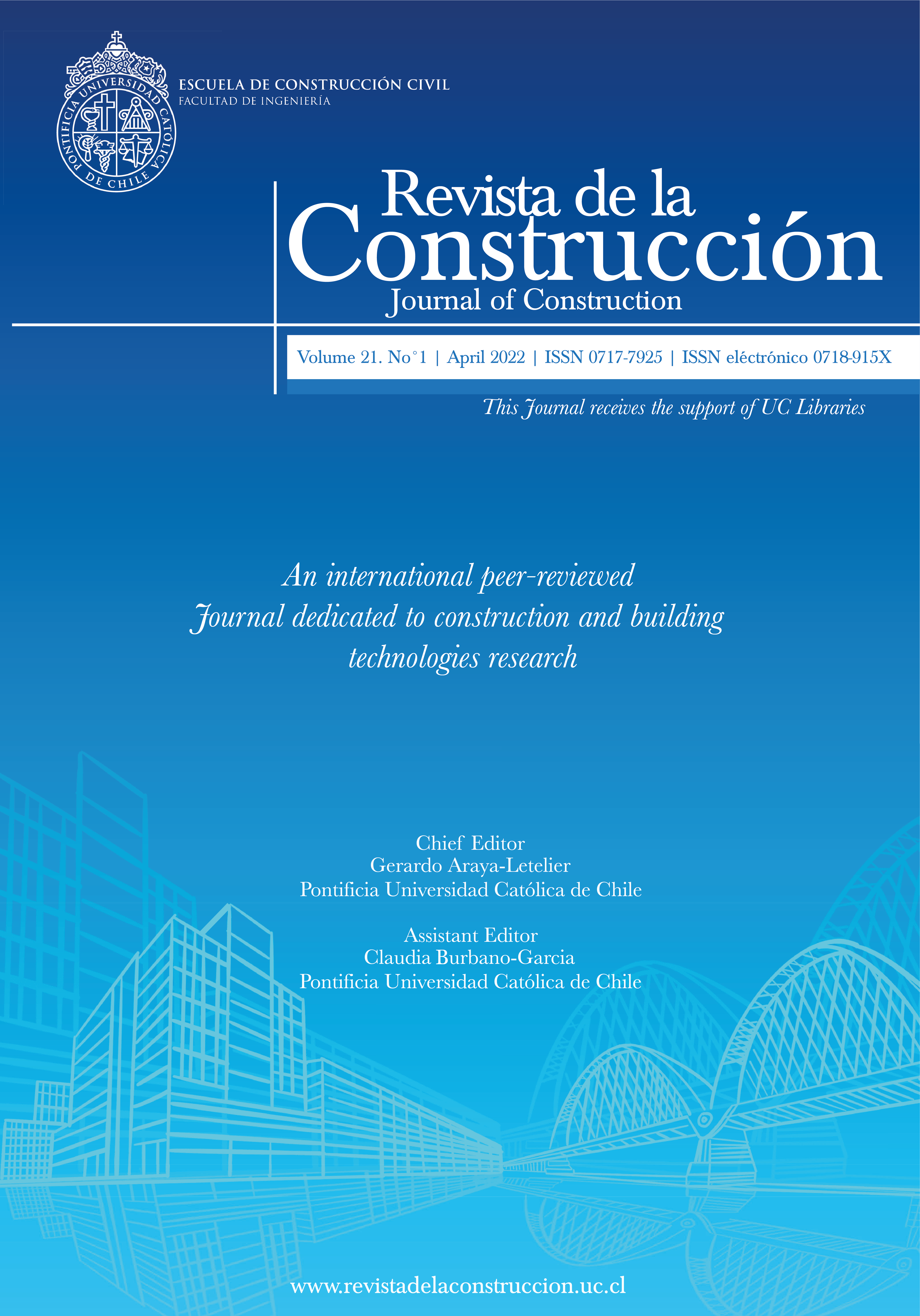A methodological approach for seismic performance of existing single-storey industrial RC precast facilities
DOI:
https://doi.org/10.7764/RDLC.21.1.167Keywords:
RC precast structures, field observations, seismic performance analysis, seismic provisionAbstract
In critical earthquake-prone regions, many kinds of old-dated industrial facilities having structural deficiencies exist. Evaluation of seismic performance of these buildings to reach a sufficient level is quite vital. This paper scopes seismic performance assessment of an existing industrial structure. In the study, a comprehensive methodology is presented to carry out the seismic evaluation process of the buildings. The entire process is illustrated using a case study from an existing industrial precast facility. In this scope, initially, construction system, geometry, layout and material properties of the examined structure were determined through lab studies and site surveys to assess the performance level. Secondly, the current status of the structure was modeled using Midas Gen finite element software and a series of analyses were performed to reveal the seismic performance. In the analyses of seismic performance, the non-linear pushover analyses method was employed in seismic code. In the model the fiber and lumped hinges were assigned to the columns and beams, respectively. The strains occurring in the column cross-sections were calculated using the curvature values obtained from the corresponding members assigned hinges. These values were compared with the limit values which were specified in the code. It is concluded that this case study presents a practical approach for engineering applications regarding the seismic evaluation of industrial structures from the perspective of update codes.
References
AFAD (2019) Interactive web application for seismic hazard maps of Turkey Earthquake. [Online] Available at: tdth.afad.gov.tr/TDTH/main.xhtml
Belleri, A., Brunesi, E., Nascimbene, R., Pagani, M., & Riva, P. (2015). Seismic Performance of Precast Industrial Facilities Following Major Earthquakes in the Italian Territory, Journal of Performance of Constructed Facilities, 29(5): 04014135
Belleri, A, & Riva, P. (2012). Seismic performance and retrofit of precast grouted sleeve connections, PCI Journal, 57(1), 97–109.
Bellotti, D., Bolognini, D., & Nascimbene, R. (2009). Response of traditional RC precast structures under cyclic loading, Environmental Se-meiotics, 2(2), 63–79.
Englekirk, R. E. (2003). Seismic Design of Reinforced and Precast Concrete Buildings, John Wiley and Sons Inc., Hoboken, New Jersey.
Ercolino, M., Bellotti, D., Magliulo, G., & Nascimbene, R. (2018). Vulnerability analysis of industrial RC precast buildings designed according to modern seismic codes, Engineering Structures, 158, 67–78.
Fleischman, R., Restrepo, J. I., Pampanin, S., Maffei, J. R., Seeber, K., & Zahn, F. A. (2014). Damage evaluations of precast concrete struc-tures in the 2010–2011 New Zealand earthquakes, Earthquake Spectra, 30(1), 277–306.
Holden, T., Restrepo, J. I., & Mander, J. B. (2003). Seismic performance of precast reinforced and prestressed concrete walls, Journal of Structural Engineering, 129:3, 286–296.
Khare, R.K., Maniyar, S. R., Uma, S. R, & Bidwai V. B. (2011) Seismic performance and design of precast concrete building structures: An overview, Journal of Structural Engineering, 38, 3, 272-284.
Kurama, Y. C., Sritharan, S., Fleischman, R. B., Restrepo, J. I., Henry, R. S., Cleland, N. M., Ghosh, S. K., & Bonelli, P. (2018). Seismic-resistant precast concrete structures: State of the art. Journal of Structural Engineering, 144(4):03118001.
Magliulo G., Fabbrocino G., & Manfredi, G. (2008) Seismic assessment of existing precast industrial buildings using static and dynamic nonlinear analyses, Engineering Structures, 30(9), 2580–2588.
Midas Gen (2018) Integrated Solution System for Building and General Structures,” in MIDAS Information Technology Co.
Restrepo, J. I., Park, R., & Buchanan, A. H. (1995). Design of connections of earthquake resisting precast reinforced concrete perimeter frames, PCI Journal, 40(5), 68–80.
Sezen, H., & Whittaker, A. S. (2006). Seismic performance of industrial facilities affected by the 1999 Turkey earthquake, Journal of Perfor-mance of Constructed Facilities, 20, 1, 28–36.
TBEC (2018). Turkey Building Earthquake Code: Rules for design of buildings under earthquake effect, Official Gazette, 18.03.2018, 30364.
Toniolo, G., & Colombo A. (2012). Precast concrete structures: The lessons learned from the L’Aquila earthquake, Structural Concrete, 13(2), 73–83.
TS EN 12504 (2002). Testing concrete in structures - Part 1: Cored specimens - Taking, examining and testing in compression, Turkish Standard Institute, Ankara.
TS EN 13791 (2010). Assessment of in-situ compressive strength in structures and precast concrete components, Turkish Standard Institute, Ankara.
TS708 (2010). Steel bars for Concrete, Turkish Standard Institute, Ankara.
Downloads
Published
Versions
- 2022-04-20 (3)
- 2022-04-20 (2)
- 2022-04-18 (1)
How to Cite
Issue
Section
License
Copyright (c) 2022 Baris Sayin, Turgay Cosgun, Baris Gunes

This work is licensed under a Creative Commons Attribution-NonCommercial-NoDerivatives 4.0 International License.





